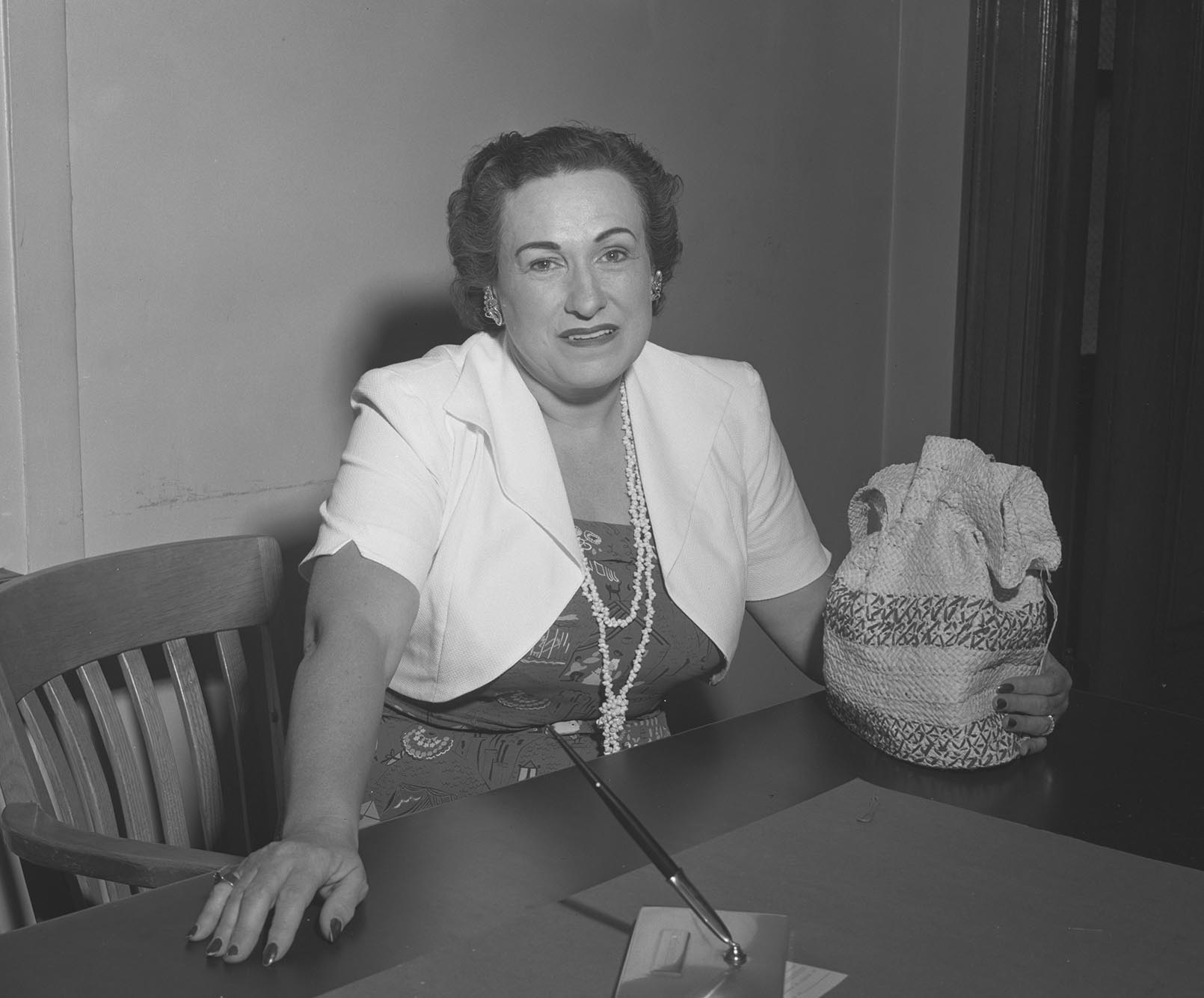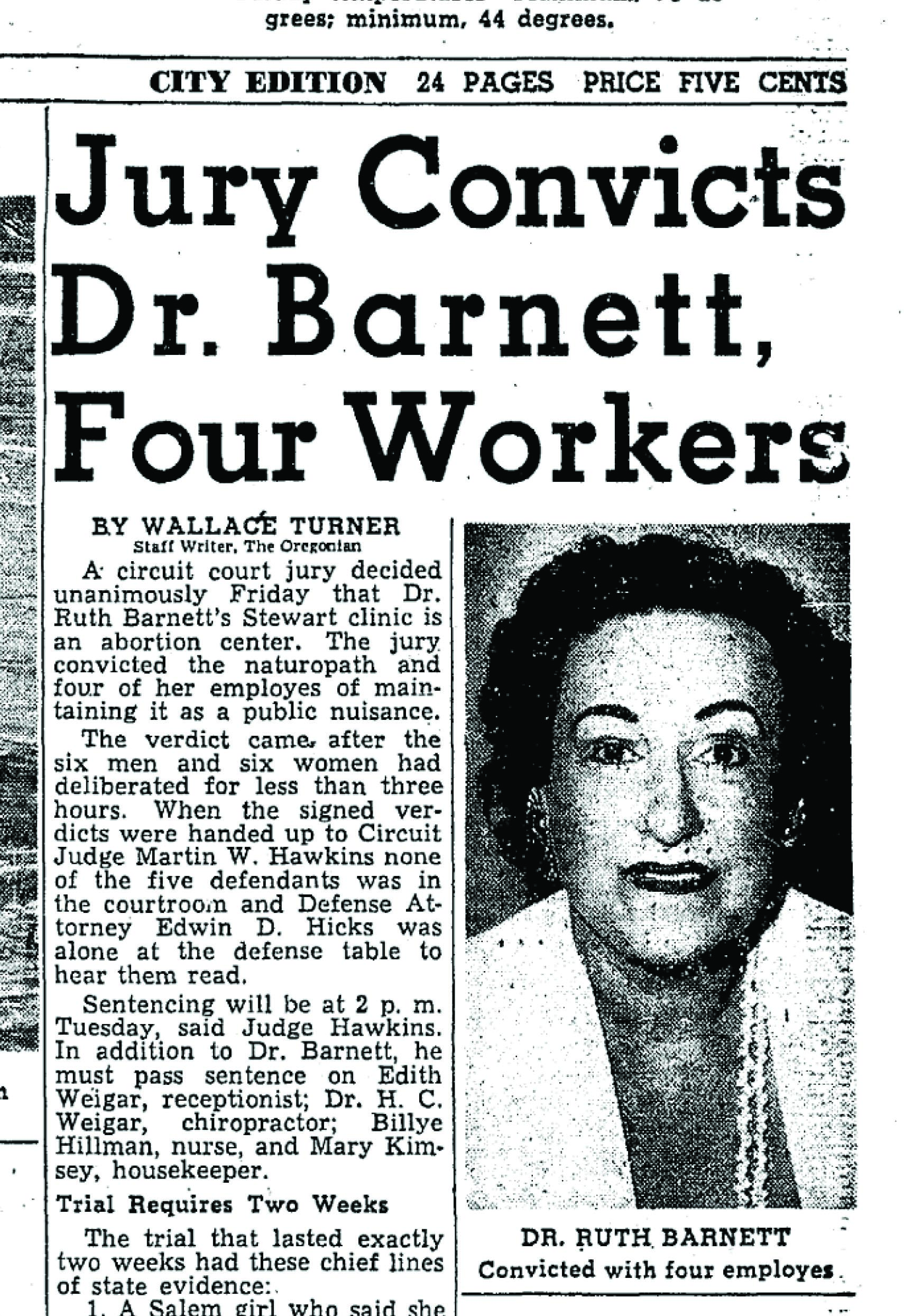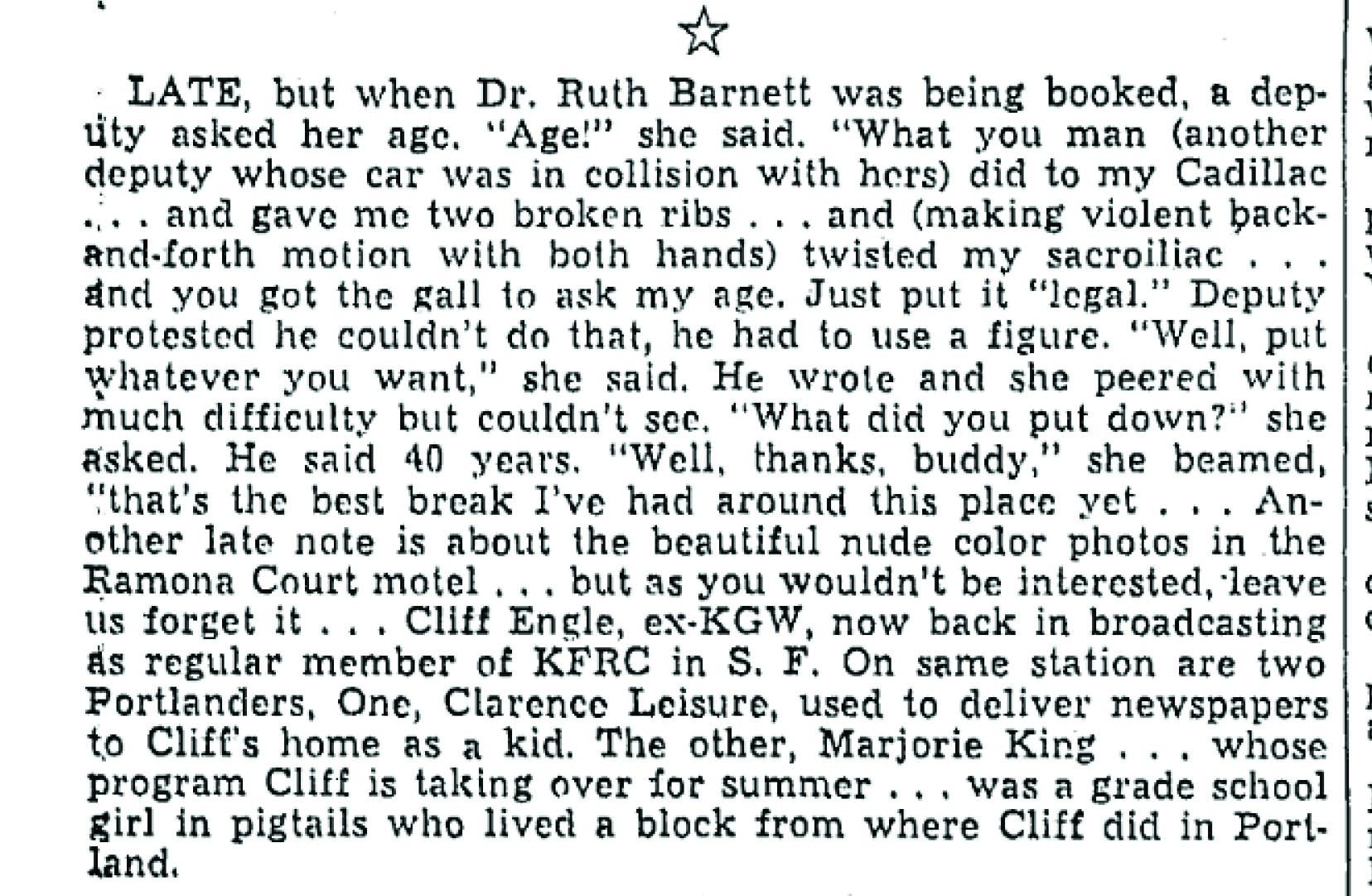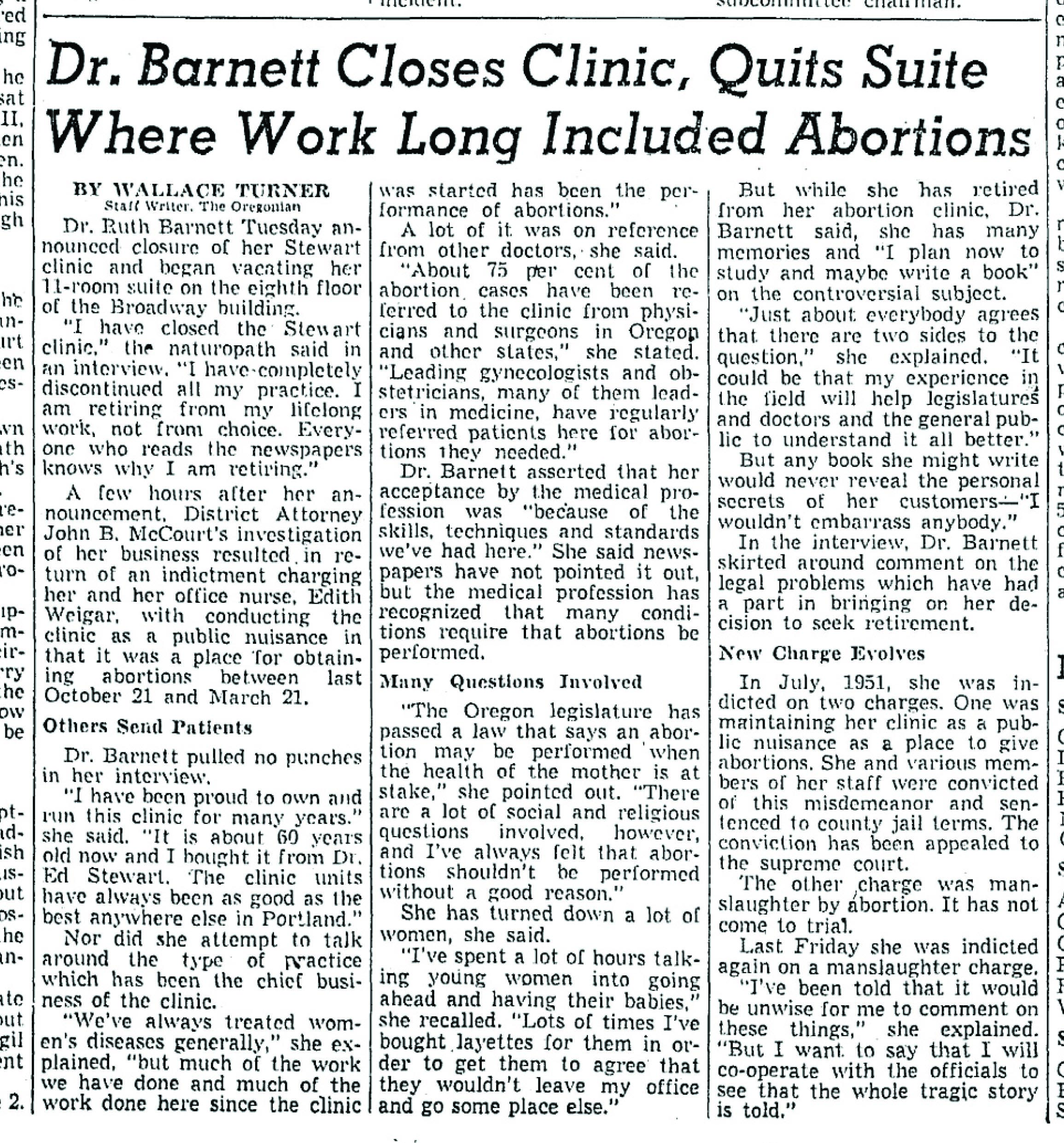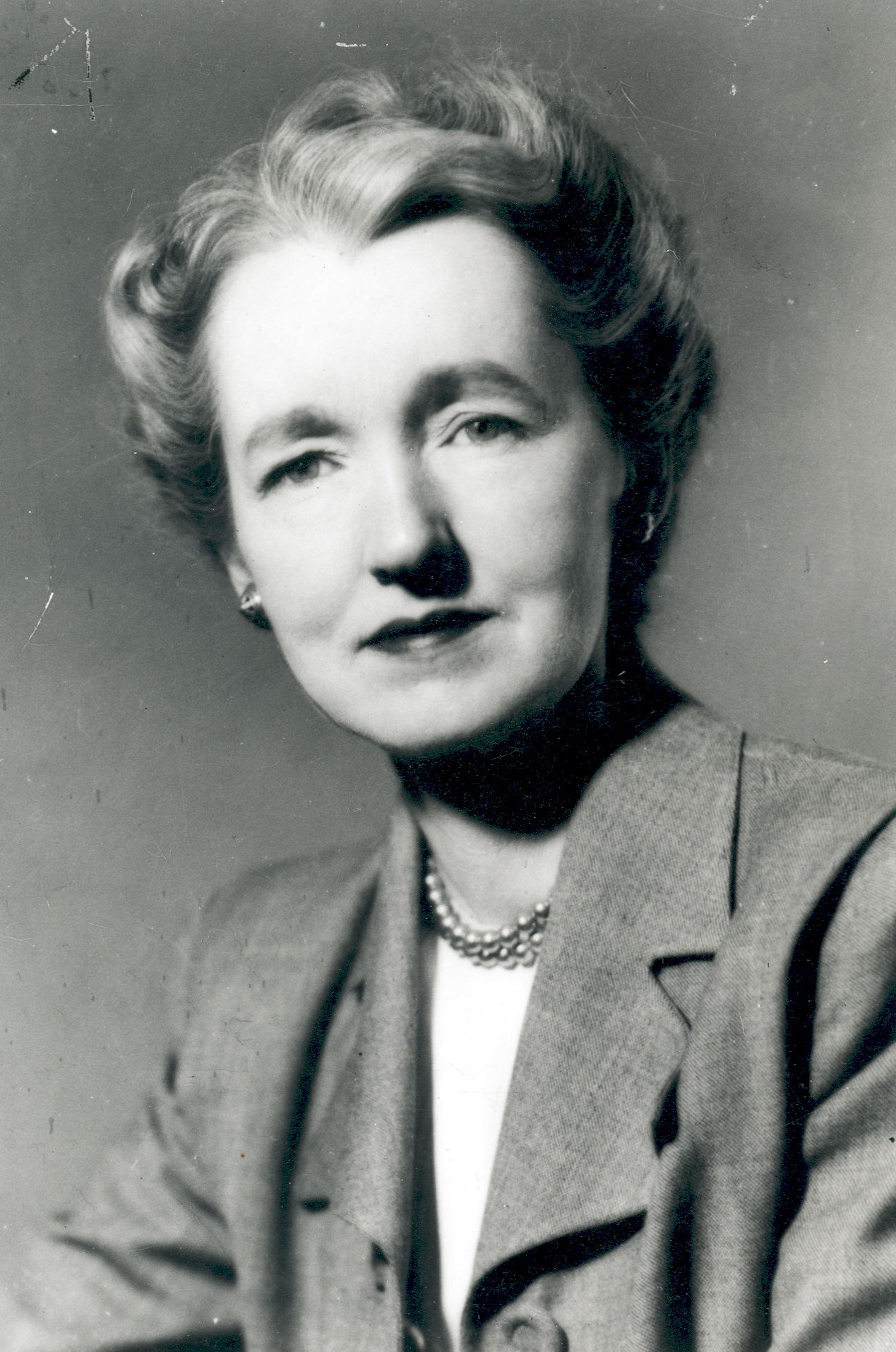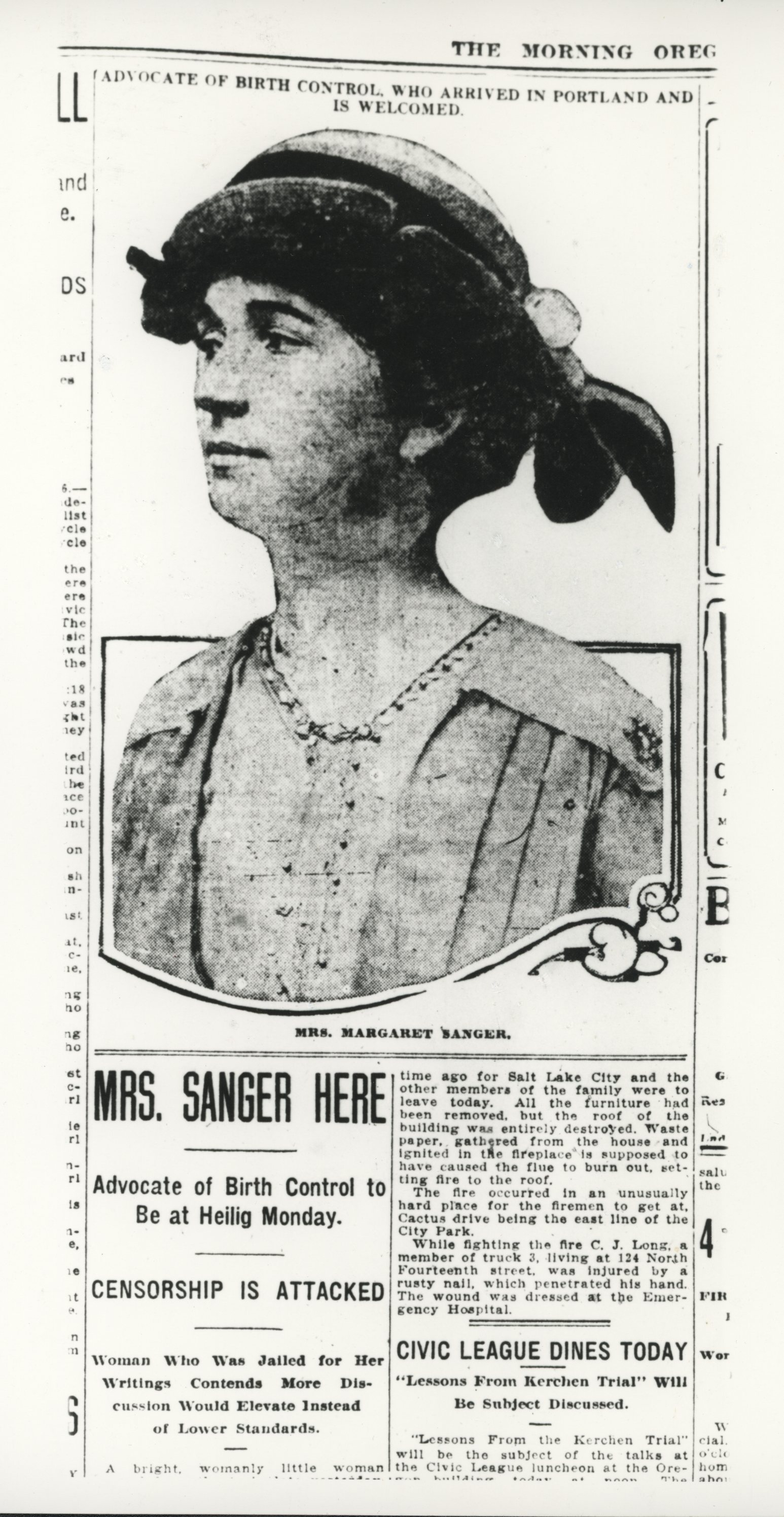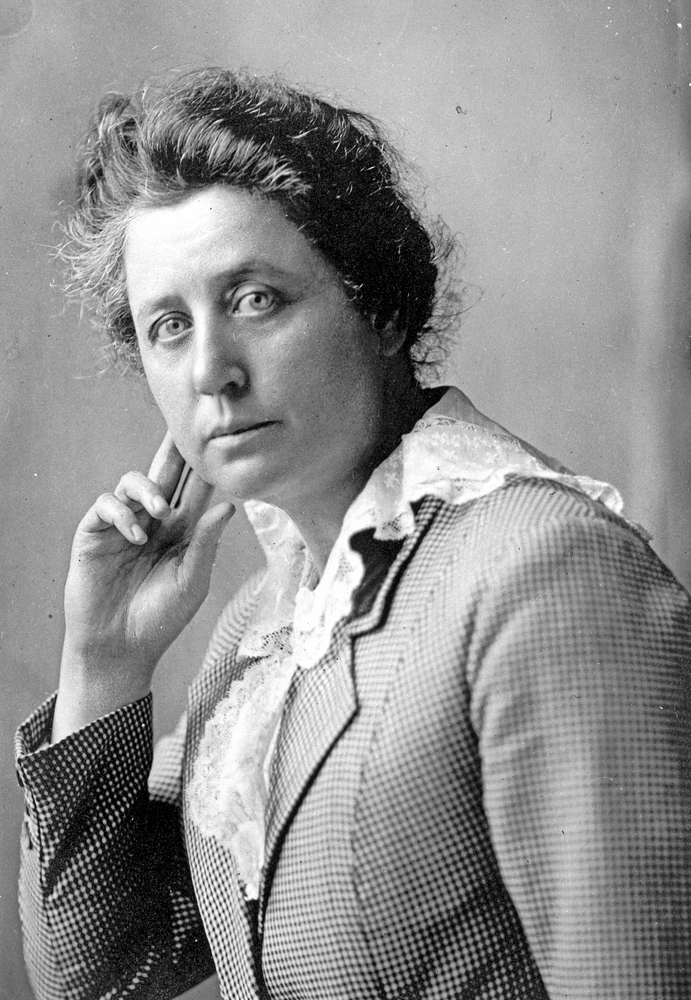Ruth Barnett was likely the most skilled and prolific abortionist in the United States during the first half of the twentieth century, performing, by her account, 40,000 illegal abortions and never losing a patient. She began performing abortions fulltime in 1918, and she didn’t stop, except for a few stretches in prison, until her death in 1969, only four years before Roe v. Wade legalized abortion in the United States. She treated incest and rape victims, teenagers, adulterous and battered wives, perimenopausal women, exhausted mothers, mistresses, and anyone else, she said, who showed up on her doorstep.
Barnett was born in Hood River on November 22, 1892, thirty-eight years after the Oregon Territory criminalized abortion in 1854 (the Oregon legislature revised the law in 1864). In 1911, she received an abortion herself from Dr. George Watts, who had an office in the Oregonian Building. She later learned how to perform abortions from him and another proficient practitioner in Portland, Dr. Alys Griff, one of the first women doctors in the Pacific Northwest. Watts and Griff were successors to Dr. Albert Littlefield, Portland’s first professional abortionist, who practiced from the late 1800s to the 1930s, and Dr. Maude Van Alstyne and Dr. Ed Stewart, who practiced from the early 1900s to the 1940s at offices in the Broadway Building in downtown Portland. Barnett learned naturopathy at Pacific States Chiropractic College and was listed as a naturopathic doctor in Portland directories.
Barnett’s relationships with the police, politicians, and other influential people in Portland protected her practice, and officials operated under an “no-death, no-prosecution” understanding with her for thirty-three years. It was an understanding that extended to all practicing abortion doctors in the city, who were usually not prosecuted unless a patient died. The crime of abortion—like gambling and prostitution—had protected status at the time, and city officials looked the other way. Many viewed her practice as a public health asset, and physicians secretly referred patients to her.
For years, Barnett saw patients at her elegant clinic in the Broadway Building, which was professional and tastefully decorated. “Women came and went in my clinic with scarcely any more fuss than there would be in keeping an appointment at a beauty salon,” she wrote. “Many girls came to me during their lunch hour and returned to work the same afternoon.”
Barnett was also considered the queen of Portland’s demimonde, draping herself in diamonds and furs and cuddling lapdogs. She lived in a lavish house at 2871 Southwest Champlain Drive in Portland’s Southwest Hills, where she entertained politicians and prostitutes, newspapermen and gamblers, businessmen and pimps.
After World War II, however, district attorneys and police in Portland and elsewhere in the nation began to crack down on victimless crimes, including abortion, as part of an effort to demonstrate that the rapidly urbanizing United States was a moral democracy and a model for the world. In 1946, Police Chief Leon Jenkins went to Mayor Earl Riley with the FBI’s concerns about crime waves, and the Portland City Club and Portland Ministerial Association asked for a crackdown on gambling and prostitution. At the same time, reporter Rolla J. Crick focused on illegal abortions in the Oregon Journal. Then, in 1948, Dorothy McCullough Lee was elected mayor on a promise to enforce the vice laws.
When multiple abortion clinics in Portland were raided in 1951, Barnett was arrested. In 1952, she was charged with “maintaining an establishment injurious to public morals” and sentenced to six months in county jail and six months probation. She appealed the conviction and continued to take abortion clients. When she was arrested again in 1953, she declared she was retiring, went to court, pleaded guilty, and received two consecutive six-month jail sentences. On March 17, 1954, she became the first of the abortionists who had been arrested almost three years earlier to be incarcerated. She served 120 days in the Rocky Butte jail.
Barnett continued her life’s work at the Slim-U Clinic, which she helped found in 1954. When she was arrested again in 1956, she pled guilty and was sentenced to Rocky Butte for a year. She was arrested five more times between 1965 and 1967 and was convicted in 1966 of manslaughter by abortion. Sentenced to two years at the Oregon State Penitentiary, she served five months before being released on parole. She later wrote a privately published memoir called, They Weep on My Doorstep: A Woman against the Law (1969).
Barnett was married three times and had a daughter. She died in Portland on December 20, 1969.
-
![]()
Dr. Ruth Barnett, 1951.
Oregon Historical Society Research Library, OrgLot1284_1887_1 -
![]()
"Jury Convicts Dr. Barnett, Four Workers." Oregonian, May 10, 1952.
Courtesy Portland Oregonian
-
![]()
"Behind the Mike," Oregonian, July 13, 1951.
Courtesy Portland Oregonian
-
![]()
"Abortion Charges Placed Against Pair by GI Wife," Oregonian, March 21, 1953.
Courtesy Portland Oregonian
-
![]()
"Dr. Barnett Closes Clinic," Oregonian, March 25, 1953.
Courtesy Portland Oregonian
Related Entries
-
![Dorothy McCullough Lee (1902-1981)]()
Dorothy McCullough Lee (1902-1981)
In 1947, the city of Portland crawled with gambling halls, strip joints…
-
![Margaret Sanger's Arrest in Portland, 1916]()
Margaret Sanger's Arrest in Portland, 1916
On June 29, 1916, Margaret Sanger was arrested in Portland for distribu…
-
Marie Equi (1872-1952)
Dr. Marie Equi was a fiercely independent Oregon physician who was enga…
-
![Portland Vice Scandal (1912-1913)]()
Portland Vice Scandal (1912-1913)
On November 8, 1912, Portland police arrested nineteen-year-old Benjami…
Related Historical Records
Map This on the Oregon History WayFinder
The Oregon History Wayfinder is an interactive map that identifies significant places, people, and events in Oregon history.
Further Reading
Barnett, Ruth. They Weep on My Doorstep. Beaverton, Ore.: Halo Publishers, 1969.
Solinger, Rickie. The Abortionist: A Woman Against the Law. Oakland: University of CA Press, 2019.

